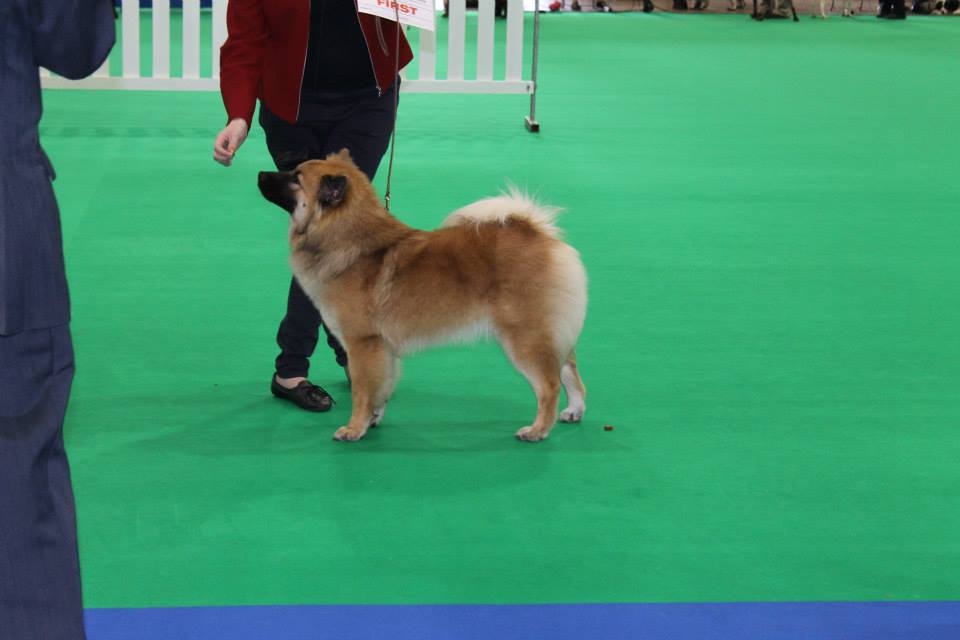Geraldine Hatch is new to showing and has kindly written about her advise for starting to show. I would like to thank her for writing about her experience of preparing to show your dog – from a newbies perspective.
Preparing to show – by Geraldine Hatch
When I got Frankie, my Eurasier, I promised the breeder I would show her. As well as being new to this breed I am quite new to showing, so have been on a huge learning curve the past 6 months.
I wanted to write this article for Winning Paws to share my experiences and help others who are new to showing. So, here are tips from me, from what I have learnt on this journey:-
Attend a ringcraft
This is a great place to socialise you dog, learn how to present your dog and yourself in the show ring and make lots of friends. I also found it a really useful place to ask questions about how to find shows and which classes to enter.
Get your entry in on time!
I didn’t realise before I started showing that the entries have to submitted so far in advance. There are a few different websites who do show entries. These can be quite confusing with all the different classes, so ask for help if you are not sure.
Check the order of judging
This is a great tip. Using whichever website you used to do your entry, you can check the order of judging and get an idea of what time you will be on. It will tell you which ring you are in, and how many breeds are in before you.
Check your journey in advance
I have found that a lot of show venues do not come up on my navigation device. Some are on farm grounds which may not have a postcode. My advice would be familiarising yourself with the route the night before and making sure it works.
Aim to arrive at the show early, this will make parking easier and also help you secure a place by your ring – lots are venues have limited space. Arriving early will also settle you and the dog, give you time to find and use the toilets and have a practice!
Grooming your dog
If you haven’t had the breed before, find out from your breeder the optimum time for doing your show preparation. I started off bathing the day before, but found this left my dog with a coat which was too soft and fluffy and not right the texture so I now do it 3 days before my which works much better.
What to wear
This really worried me. Luckily I was able to ask at ringcraft, but I have also lived and learned. Lots of people wear suits at champ shows. Open shows can be more casual while still looking smart and I normally wear trousers and a shirt or blazer. I would definitely suggest making sure you have comfortable shoes which you can easily move your dog in. I remember buying some shoes in the perfect shade of purple to match my suit – only to find they slipped off when I tried to trot!. I would also recommend wearing layers, shoes venues can be extremes of temperature, and you can never really tell until you get there. It is a good idea to look at what type of venue you are going to.
I once wore ballet style flats (it was the summer!) to an equestrian centre and spent the day with feet full of sand and wood chippings!
Find a companion
Dog shows can make for long days and boring car journeys. If you can find a friend to share the experience (and travel costs!) with it will be much more fun.
It is easy to make friends at ringcraft and find somebody who shows in the same group as you.
Have fun!
There was a long wait until my first show – Windsor champ show – when Frankie was 6 months and a few days old. After finding my bench and ring and doing a bit of practice (these can be other posts altogether!) we were on! All the build up and nerves and our time in the spotlight was over in a couple of minutes. It was so worth it though as we came away with a Crufts qualification as well as being hooked and hasn’t looked back since.
My biggest tip would be to enjoy it.
